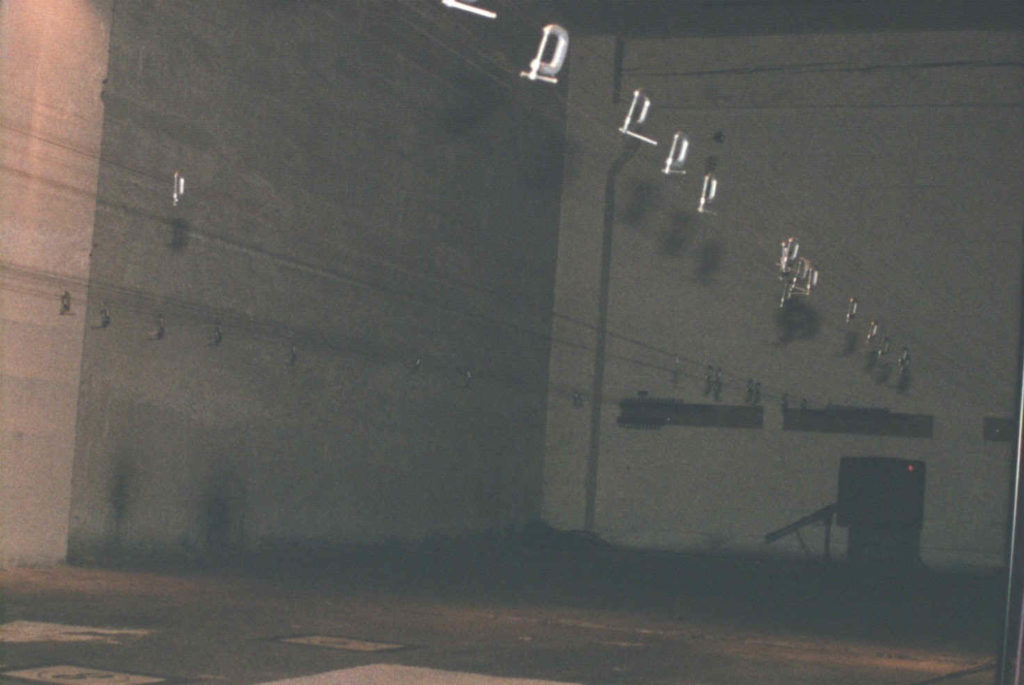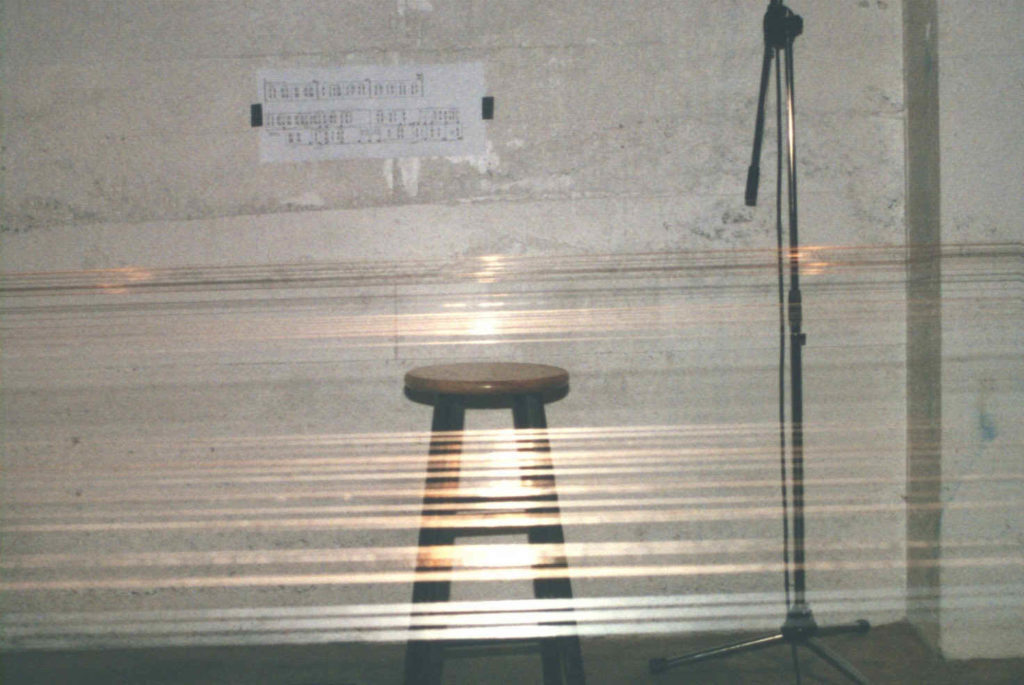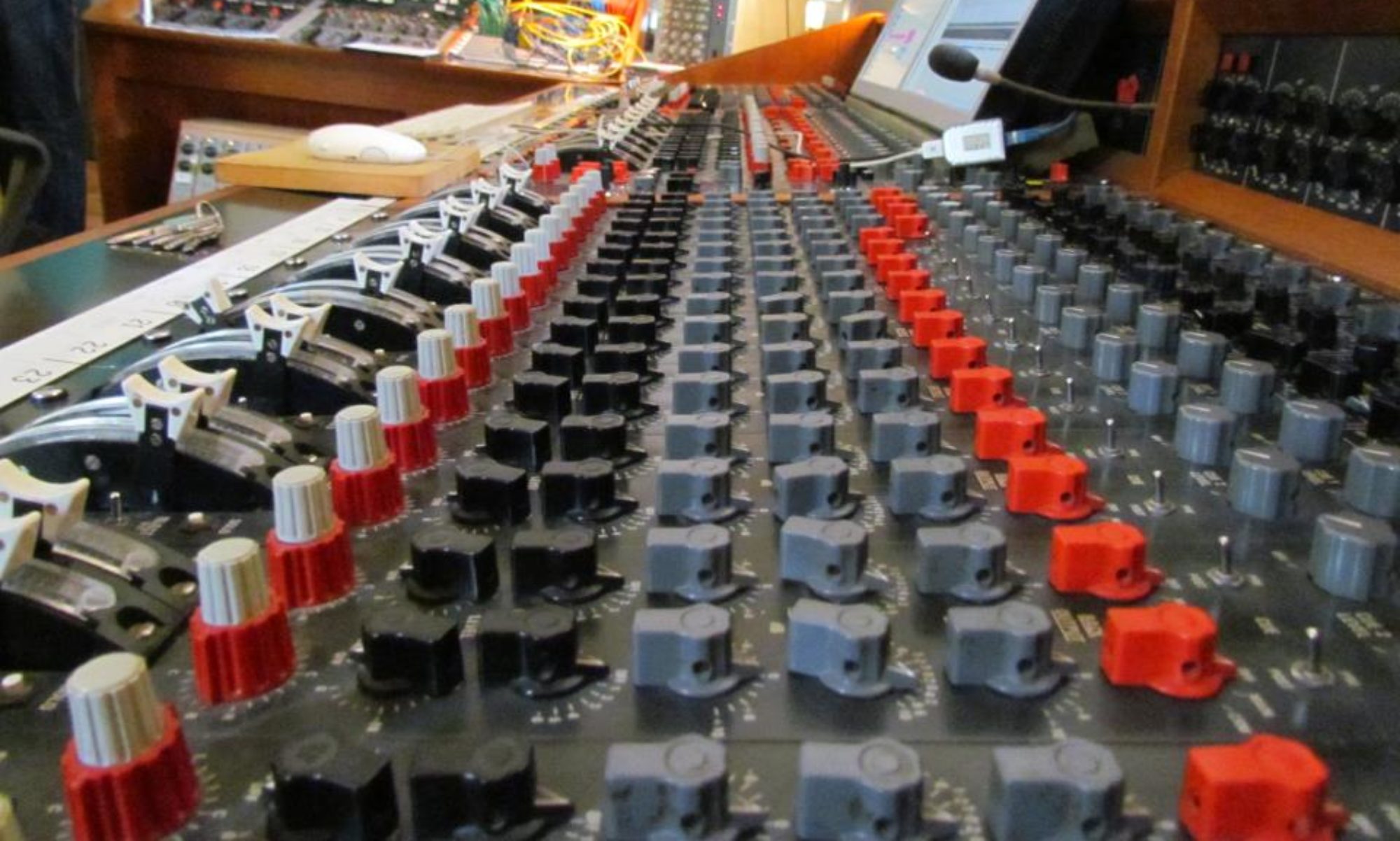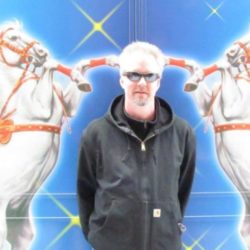My first stab at 5.1 mixing. The idea was to make a directionless mix. A sound object that you could walk through, sit in or observe from afar.

Ellen Fullman Margaret Tuned the Radio in Between Two Stations
“The installation of the Long String Instrument (LSI) used for this Starkland recording has about 100 strings, suspended at waist height for 96 feet. The strings terminate into acoustic wooden box resonators. The instrument is played by rubbing the strings with rosin-coated fingertips, while walking. Duration of pitch sustain is determined by distance traveled. The performer occupies a pathway between two banks of strings. A C-clamp on each wire is used for tuning, changing the string length much like a capo on a guitar. The instrument is tuned in just intonation, a natural tuning system. The three octave range is centered on middle C. The strings of the bass octave extend the instrument’s full length. The middle and high octaves are suspended from double-sided resonators mounted in the center of the room; strings extending to either wall. The physical scale of the installation and the way that the overtones interact with the space turn the room itself into a giant musical instrument.

“Scott Colburn designed the surround mix. His intention was to create a mix that utilizes movement, creates phantom images, has a front and back side; but is also interesting regardless of the listener’s position in the room.
“I made the recordings direct-to-disk using ProTools and a pair of Brüel & Kjær microphones. The mics were placed close (from 1 to 3 feet) to the resonators. The mid and high range resonators, one on either side of the performer, are played by the left and right hands. These were miked separately. Each track was then individually played back and miked to record the natural reverb of the 1500 sq. ft. concrete space.

“The mix is constructed in three layers. The bass strings were placed in the center channel with the ambience track placed in the phantom center of the surround pair. The next layer is the middle octave strings. The dry stereo pair of the mid strings were placed beyond the front stereo speakers with the ambience slightly beyond the surround pair of speakers. This creates a phantom stereo image between the front and surround speakers, emphasizing the non-directionality of the listening environment.

“The third layer is the only layer that moves. The sound source is a technique called ‘twine.’ A piece of fishnet repair twine, tied around an LSI string, is rubbed between the fingers. This has a fluttering, percussive, mandolin-like quality. A scale was divided between the two resonators, left to right, in chromatic order. Each resonator was miked separately, producing a ‘call and response’ between the left and right channels. The dry sound starts in the surround pair of speakers and the ambience starts in the front pair of speakers. The ambience of the right channel surround is placed in the left front speaker and the left channel surround ambience is placed in the right front speaker. Over the course of the piece, the dry signal starts in the surround pair, moves to the front then returns to the surround pair; as the ambience starts in the front, moves to the surround pair, then returns to the front.”


